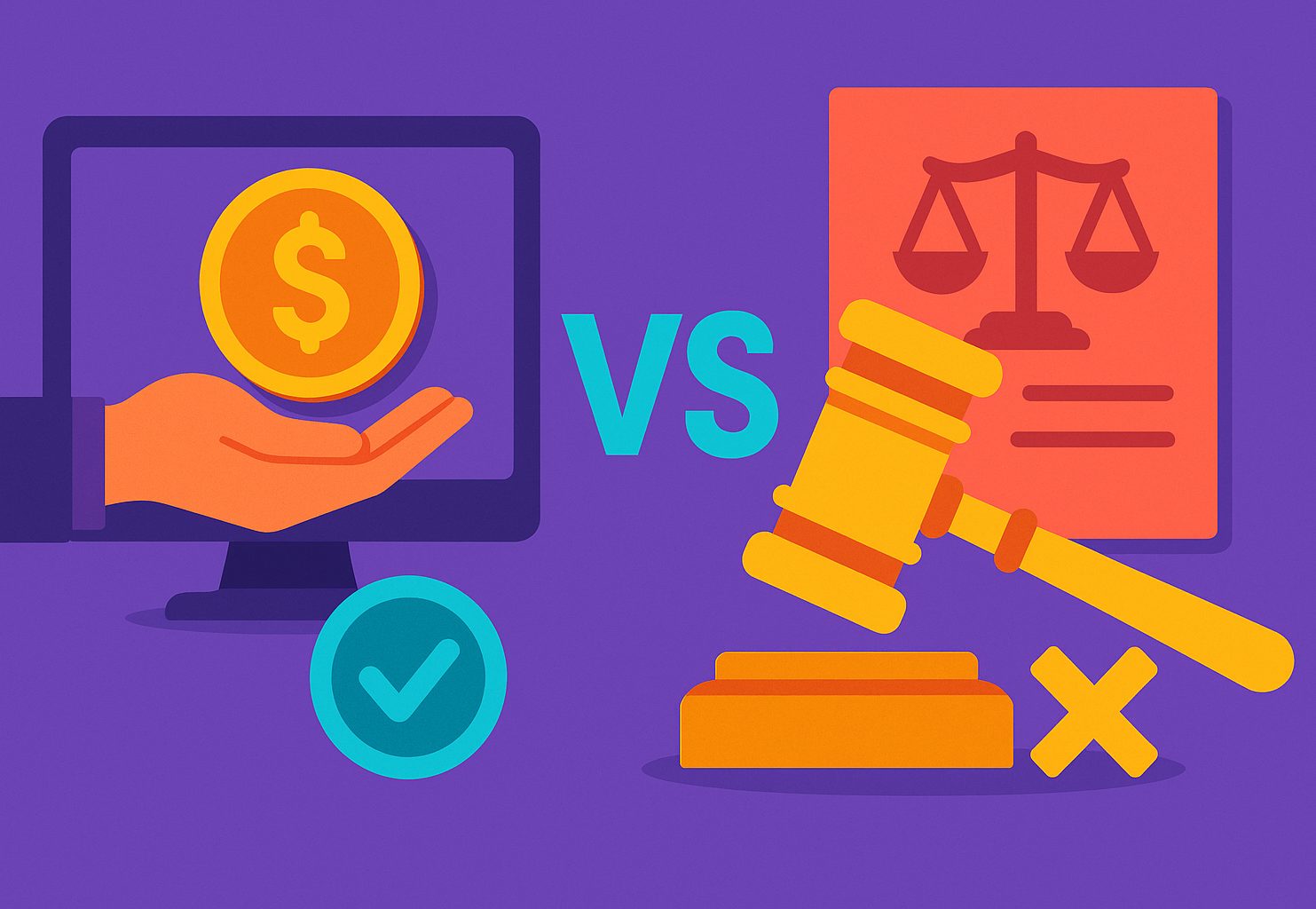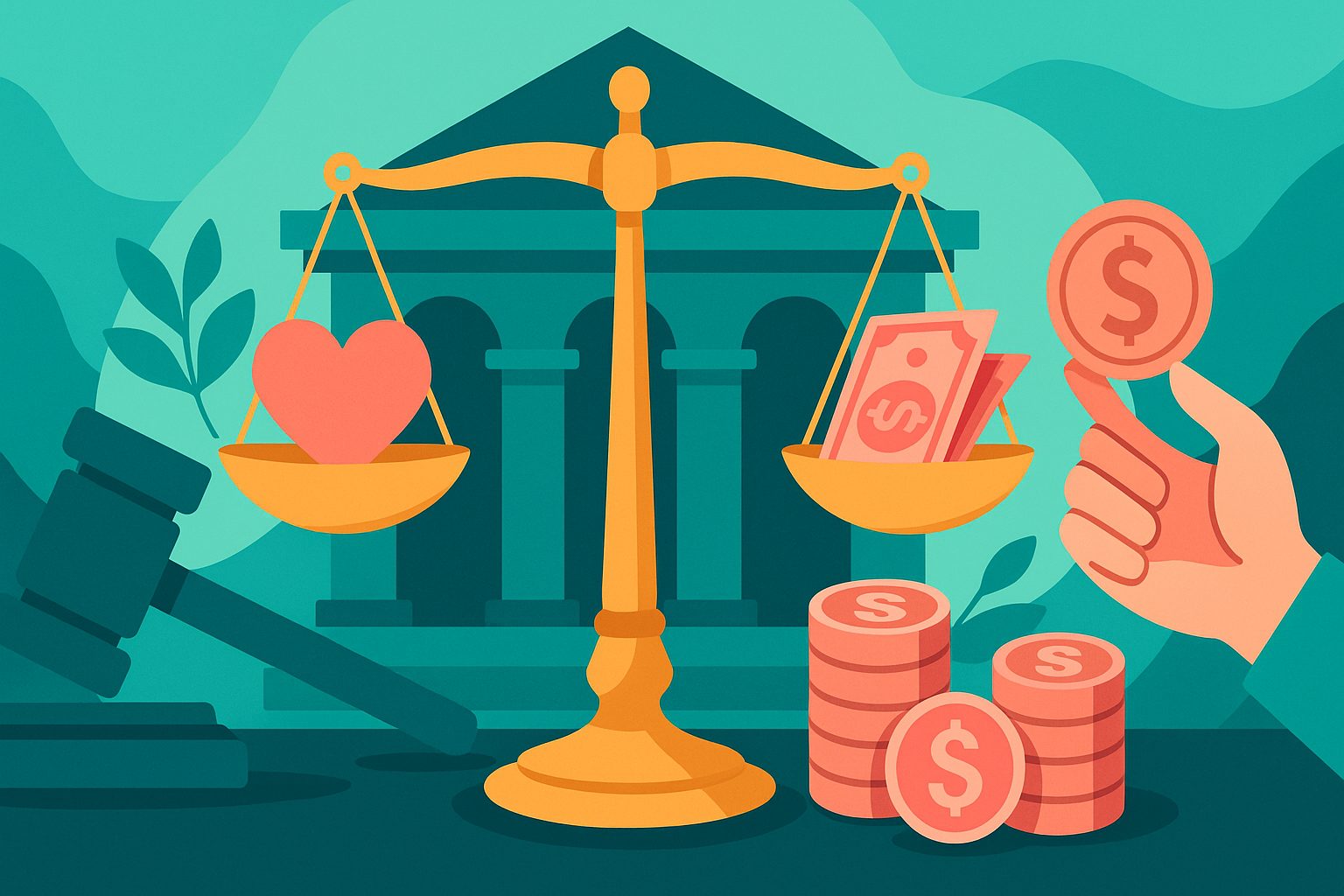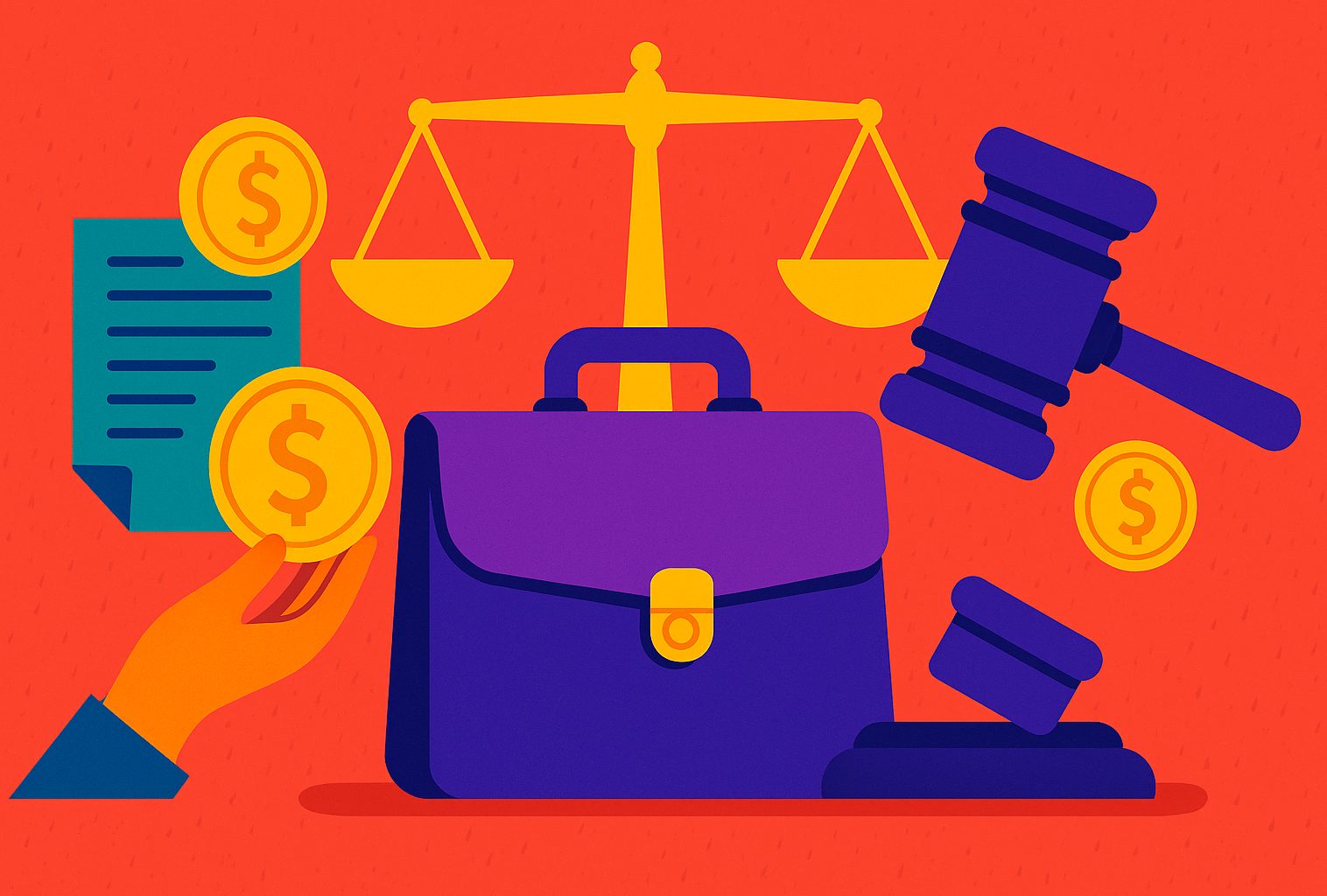Walking the Tightrope: The Dual Nature of Litigation Crowdfunding
Litigation crowdfunding is redefining access to justice and introducing a bold new asset class for risk-tolerant investors. This transformative concept allows individuals and institutions to fund legal cases in exchange for the potential of a significant return—or the satisfaction of backing a cause they believe in. But along with its promise comes a critical challenge: balancing the immense reward potential against the equally significant risk. Understanding how to walk this tightrope is essential for anyone—plaintiff, supporter, or investor—stepping into the world of litigation crowdfunding. This article unpacks how to make smart, strategic decisions that weigh both the perils and the payoffs.
The Dual Purpose of Legal Crowdfunding
Litigation crowdfunding straddles two powerful motivations: impact and income. On one hand, it democratizes legal recourse, enabling under-resourced plaintiffs to pursue justice against well-funded defendants. On the other, it creates a vehicle for financial gain by turning legal claims into investable opportunities. This duality is what makes litigation crowdfunding so unique—and so complex. Some participants contribute for moral or personal reasons, while others evaluate lawsuits with the analytical precision of a venture capitalist. Both are valid, but they come with different expectations, timelines, and tolerance for loss. Striking the right balance between passion and pragmatism is the cornerstone of success in this space.
Legal Claims as Investment Assets
From an investment standpoint, lawsuits offer a rare proposition: an asset class uncorrelated with traditional markets. A case’s outcome is driven by legal arguments, procedural events, and the strategic prowess of attorneys—not by inflation, interest rates, or global economic swings. This independence can be a valuable hedge within a diversified portfolio. But legal claims are also inherently volatile. They may take years to resolve, and the path to victory is never linear. Settlement negotiations may fall apart. Judges may rule unpredictably. Even strong evidence can falter under procedural missteps. Investing in litigation crowdfunding means stepping into a world of high variability—and understanding that no outcome is guaranteed.
The Appeal of Outsized Returns
For those willing to assume risk, litigation crowdfunding offers potential returns that dwarf many traditional investments. In successful cases, backers can earn multiples of their initial contribution, particularly in commercial litigation or mass torts involving large settlements. This allure is especially strong when compared to low-yield bond markets or volatile equities. Platforms tout cases with strong legal foundations, high damage estimates, and experienced legal teams—all indicators of potential upside. But savvy investors know that large rewards rarely come without a corresponding exposure to loss. The art lies in identifying cases where the reward outweighs the risk—and managing that risk over a broader investment horizon.
What Risk Looks Like in a Legal Context
Unlike other investments where risks are often financial or market-driven, litigation funding carries its own unique spectrum of risks. A judge might dismiss a case early in the process. A key witness could become unavailable. Discovery might uncover information that weakens the plaintiff’s claim. Defendants may stall proceedings, drawing out the timeline and increasing legal costs. Even a winning verdict may face appeals that delay or reduce payouts. And in some jurisdictions, unexpected procedural changes or changes in case law can derail an otherwise solid case. Understanding these variables and accounting for them in your funding strategy is vital to balancing the equation.
Diversification: Your Best Defense Against Uncertainty
In any investment strategy, diversification is a time-tested way to manage risk. Litigation crowdfunding is no exception. Because each lawsuit is a high-risk proposition, spreading funds across multiple cases can smooth returns and reduce exposure to any single failure. This principle is the foundation of litigation funding portfolios and pooled investment products now offered by some platforms. By backing a variety of claims—across different legal categories, geographies, and case stages—investors can enhance the likelihood of positive outcomes. It’s not about predicting one winner. It’s about building a portfolio where a few big wins offset inevitable losses.
The Importance of Case Vetting and Legal Merits
Not every case offered for crowdfunding deserves to be funded. Platforms differ significantly in how they screen and present cases. The best platforms conduct thorough legal reviews, consider the experience of the legal team, evaluate evidentiary support, and analyze defendant solvency. They may also consult legal experts or former judges to assess merit. For investors, understanding a case’s legal standing is essential. Is liability clear? Are damages well-documented? Is the jurisdiction favorable? The strength of a claim is the first and most critical filter for managing investment risk. Without it, any reward is speculative at best.
Navigating Return Structures and Investor Agreements
How returns are structured matters just as much as the case itself. Litigation crowdfunding deals come in various formats. Some offer fixed returns based on settlement size; others distribute profits via a waterfall structure where legal fees, platform fees, and other costs are deducted before investors are paid. Some offer capped returns or preferred returns, while others take a “success fee” approach. Each model affects both the risk profile and potential return. Investors must examine the fine print. Is your return calculated before or after legal expenses? Are you funding a portion of the case or the full amount? Do you receive updates and exit options? Clarity on these terms is essential for evaluating your position.
Timing Your Investment for Risk Control
The stage at which you fund a lawsuit can significantly affect your risk and reward exposure. Early-stage funding—before discovery or motions—is the riskiest but often comes with the greatest potential upside. Mid-stage funding, after key milestones like the denial of a motion to dismiss, offers a more informed entry point. Late-stage funding, often right before settlement or trial, provides lower risk but typically yields lower returns. Deciding when to enter depends on your risk appetite and investment timeline. Some investors prefer the thrill—and potential payoff—of early-stage support. Others favor the relative predictability of joining at a later phase when outcomes are more foreseeable.
Managing Expectations and Emotional Investment
One of the subtler challenges in litigation crowdfunding is managing expectations—not just financial ones, but emotional ones. Backing a case, especially one involving human rights, personal tragedy, or systemic injustice, can become deeply personal. It’s natural to root for a positive outcome, not only for the return but for the moral victory. But emotions can cloud judgment. Investors must separate their passion from their portfolio strategy. Not every just cause wins. Not every valid case results in compensation. And even when justice is served, legal fees and administrative expenses may dilute the return. Keeping a clear, objective perspective is a key part of risk management.
Legal Ethics and Regulatory Safeguards
The rise of litigation crowdfunding has prompted increasing attention from regulators and legal ethics boards. While the practice is legal in many jurisdictions, rules around funder disclosure, attorney influence, and client confidentiality vary. Some courts require that third-party funding arrangements be disclosed to opposing parties. Others restrict how much control a funder can exert over litigation strategy. These regulations aim to protect the integrity of the legal system and the rights of litigants. For investors, ethical platforms that follow these standards not only reduce compliance risk but also signal reliability and professionalism. Transparency, independence, and accountability should be non-negotiable components of any funding partnership.
The Role of Litigation Funding Platforms in Risk Mitigation
A platform’s ability to manage risk directly impacts the success of its funders. Top-tier platforms don’t just host cases—they evaluate them, monitor progress, provide structured updates, and offer fund disbursement oversight. Some go further, employing legal analytics to assess outcome probabilities or partnering with insurance providers to hedge investor exposure. They also enforce best practices, ensuring that plaintiffs, attorneys, and funders all operate under clearly defined terms. For investors, choosing a platform with strong governance, a clean track record, and a commitment to ethical standards is the first and most important step toward reducing risk.
Exit Strategies and Liquidity Options
Litigation investments are inherently illiquid. Once committed, capital is often tied up until the case concludes—sometimes years down the line. However, innovations in the sector are beginning to change this. Secondary marketplaces, fund-of-fund structures, and transferable litigation notes are providing investors with potential exit options before case resolution. While still limited in scope, these options add flexibility for those seeking shorter holding periods or more dynamic portfolio management. Investors interested in liquidity must choose platforms that either offer these features or are actively working to develop them. Liquidity doesn’t remove risk—but it can make it easier to manage.
Real-World Examples of Risk and Reward in Action
In one notable commercial litigation case, investors backed a startup’s lawsuit against a large corporation for breach of contract. The platform performed deep legal due diligence, the case survived a motion to dismiss, and a favorable summary judgment led to a $10 million settlement. Early investors received 3x returns. In contrast, a wrongful termination case—emotionally compelling but legally ambiguous—failed to clear procedural hurdles and was dismissed early. All investor funds were lost. These examples illustrate the extremes of the risk-reward spectrum and underscore the importance of strategic case selection and timing.
Preparing for the Next Evolution of Legal Investment
As litigation crowdfunding grows, so does its sophistication. The next wave of platforms will likely incorporate blockchain for smart contract-based payouts, AI for case analysis, and global cross-border participation. As this ecosystem matures, so too will the frameworks for assessing and mitigating risk. Investors who stay informed, build diversified portfolios, and work with trusted platforms will be best positioned to navigate the future. This space will continue to evolve—not just as a tool for justice, but as a frontier for smart, impactful investment.
Balancing the Scales with Strategy
Litigation crowdfunding sits at the intersection of impact and opportunity. For those willing to embrace its complexity, it offers the rare chance to back meaningful causes while pursuing meaningful gains. But success lies in balance. Understanding when to act, how much to commit, and what level of risk to tolerate is the difference between a rewarding venture and a costly misstep. Whether you’re investing in your first case or building a legal portfolio, the smartest approach is one that pairs optimism with rigor, ambition with prudence.
In the courtroom of high-stakes finance, the best returns go to those who know how to balance every move—because in litigation crowdfunding, risk is real, but so is reward.




